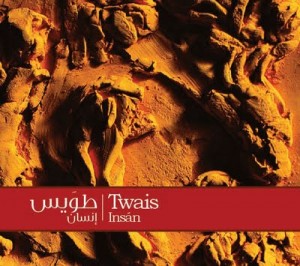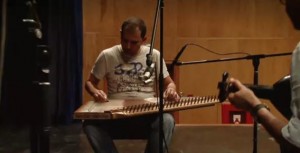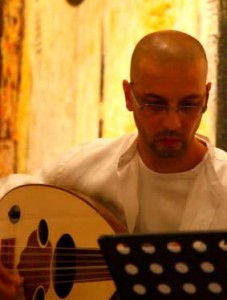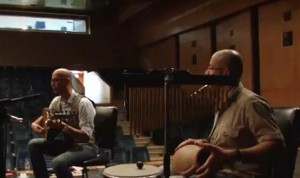The below guest blog post is authored by Brian Unger, an American musician and music producer who led the 2010 Music Exchange Program in Damascus, Syria. This is the third of a series of posts by Mr. Unger that explores his experience in Syria. You may also read Part 1 and Part 2.
Continuing my first day of recording in Damascus, after lunch I had the pleasure of recording the quartet Twais, led by the well-known Syrian oud player and composer Essam Rafea. In addition to Essam, the instrumentation consisted of: Firas Charestan on qanun, Salah Namek playing cello and Badi Rafea on percussion.

This was my first experience recording a qanun an Arabic instrument similar to a zither or to my ears somewhat like a hammered dulcimer. It has a complex system of levers that enable Arabic scales known as maqam to be played. This non-even tempered division of the scale containing some ¼ tones is the most distinctive characteristic of Arabic music and sometimes the hardest for the western ear to comprehend. To watch qanun players manipulate the levers while maintaining the flow of the melodies within the pieces is impressive to say the least.

This was also my first experience with the oud, an instrument that hails from the same ancestral lines as the lute. It differs in that it is a fret-less instrument and therefore capable of the more subtle variances in pitch of the aforementioned maqam. Ouds are generally an eleven stringed instrument with the strings grouped in pairs with a final single 11th string in the lowest register.

This session, consistent with the instrumentation, focused on more traditional sounding Arabic melodies and overall style of playing. I emphasize the word melody as traditionally harmony plays little or no role in Arabic music. The first piece entitled Al Jamal (The Beautiful) opens with a haunting melody line over a pulsed pedal tone bass. There is an extended mid section in which the oud and qanun have nice room to improvise and a reprise of the intro melody at the end of the song. I was particularly pleased that I was able to capture the instruments so well with this minimal supply of microphones I had brought. This is a compliment to the players, whose mastery of dynamics and control did most of my work for me.

The second piece was entitled Wamda. This is the Arabic word for “spark”. As the name suggests, this piece begins almost mysteriously, ribatto, with the cello sustaining low somber tones and the oud and qanun adding sparse plucked textures. Then at a very slow pace, a beat appears on percussion, and gradually crescendos until the main melodic theme presents itself more than halfway through the piece. The tempo is now allegro almost a dance. A nice cello solo fills the gap before the final recapitulation into the coda. Just a great experience working with true consummate professionals.
For more information about the 2010 Music Exchange, along with our other programs, please visit our YouTube channel.